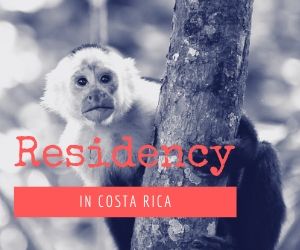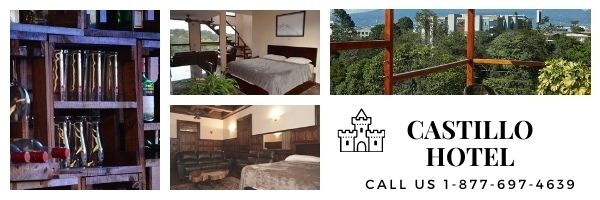| PHD From Del Rey University! |
Joined: Tue Dec 28, 2004 5:55 pm
Posts: 4036
Location: South America
|
PacoLoco wrote: There was an eruption at the Volcán Poás crater Tuesday.
I read the following article in AM Costa Rica. I think this is what my cousin in Heredia was trying to explain to me...new faults and tectonic activity stirring up the volcano. I'm curious to know if the seismic event in Medellin is tied to the quake in CR.
More problems appear to be ahead for quake victims
By the A.M. Costa Rica staff
A flurry of earthquakes Monday night and Tuesday morning signaled the presence of yet another fault in the vicinity of the Volcán Poás, and residents of the area, already reeling from Thursday's 6.2 magnitude shock are nervous.
In addition, a small eruption has been reported in the volcano caldera.
Although local experts dismiss any connection between volcanic activity and earthquakes, a new Oxford University study says that very large earthquakes can trigger an increase in activity at nearby volcanoes. It is a statistical study based on geological history in southern Chile that shows up to four times as many volcanic eruptions occur during the year following very large earthquakes than in other years. This volcanic surge can affect volcanoes up to at least 500 kms. (310 miles) away from an earthquake’s epicenter.
The Poás volcano is just 10 kms. (6 miles) from Thursday's epicenter, which was 35 kms. or 22 miles northwest of San José.
Experts from the Observatorio Vulcanológico y Sismológico de Costa Rica have downplayed any suggestion that the killer quake Thursday would spur activity in the volcano, although they reported a surge of gases at the time of the quake.
Meanwhile Tuesday rescue workers found three more bodies, bringing the death toll to 20. Two bodies were recovered in the community of Vara Blanca and one in Cinchona, near the estimated epicenter. Some 17 persons still are listed as missing. The body of Joselyn Jiménez RodrÃguez was recovered in Cinchona. The bodies of Marco Jiménez Román and Carlos Villegas Mora were found in Vara Blanca.
Vara Blanca and Cinchona, on the east side of the Poás Volcano, were close to some of the earthquake activity Monday night and Tuesday morning. The strongest quake was 4.3 magnitude at 1:11 a.m. Tuesday. The flurry of quakes raised fears that a fault on the west side of the volcano near Bajos de Toro de Alajuela might produce another devastating shock. A flurry of quakes preceded Thursday's killer.
The Observatorio Vulcanológico y Sismológico reported that one of their experts, Jorge Brenes, a vulcanologist from England and two from New Zealand witnessed the eruption Tuesday. They were on the east side of the Poás crater.
The observatory said in a press release that the eruption was 50 meters in diameter (about 160 feet) and about 15 meters (about 50 feet) high. The observatory said that the bubble of gas and water was interpreted as having been released by the recent seismic activity. The event took place at 2:11 p.m., the observatory said.
The Oxford University report is to be published in the journal Earth and Planetary Science Letters.
Previously, scientists had identified a few cases where volcanic eruptions follow very large earthquakes — but up until now it had been difficult to show statistically that such earthquakes may be the cause of an increase in eruptions, rather than the events just being a coincidence, said the university.
"The most unexpected part of this discovery was the considerable distance from the earthquake rupture where these eruptions took place, and the length of time for which we saw increased volcanic activity," said Sebastian Watt, a doctoral student in Oxford’s Department of Earth Sciences, who conducted the analysis.
"This suggests that seismic waves, radiating from the earthquake rupture, may trigger an eruption by stirring or shaking the molten rock beneath volcanoes. The disturbances that result from this lead to eruption but, because of the time it takes for pressure to build up inside a volcano and for magma to move towards the surface, an eruption may not occur until some months after the earthquake," Watt added.
One of the two Cinchona sodas or eating places destroyed Thursday that yielded bodies.
Watt examined the volcanic eruption and earthquake records of southern Chile where, in 1835, Charles Darwin first speculated on the link between earthquakes and eruptions, the university said. By careful analysis of historical records, he discovered that volcanic activity increased for about a year after each of the very largest earthquakes in southern Chile during the past 150 years, said the university, adding that the volcanoes most likely to be affected lay within about 500 kms. of the earthquake epicenter, and included both dormant and active volcanoes.
The great Chilean earthquakes in 1906 and 1960 (the largest earthquake ever recorded) were each followed by activity at six or seven volcanoes — a significant increase on the average eruption rate of about 1 per year, according to the study.
That would suggest that Thursday's quake might have affected all the volcanoes in the nation's central mountain range. Some like Poás and Arenal are obviously active. Others are not.
In another development Tuesday, the government requested international financial aid through the United Nations. The request was to receive assistance for rebuilding bridges and highways, as well as homes and agricultural enterprises. The area devastated by the quake was a major dairy producing region as well as the location of various agricultural providers.
President Óscar Arias Sánchez returned to the quake zone Tuesday to visit the Poasito school that was heavily damaged. Officials said that this school alone would require 600 million colons or about $1.1 million to rebuild. At least five other schools are also damaged in the area and classes start Feb. 9.
Rolando Hidalgo Villegas, the mayor of Santa Bárbara de Heredia on the fringe of the impacted area, was among those asking for aid Tuesday. He said that 203 quake refugees were housed in the Liceo El Roble there and they lacked the most basic necessities.
Elsewhere some 2,100 persons were in public shelters and an undetermined number being housed privately. Many will never be able to return to their former homes. Officials said that communities like Cinchona can never be resettled. In addition, many communities will suffer even more damage when the rainy season begins due to the bare earth and damaged slopes.
Around the country the work goes on to raise funds and supplies for the displaced. Banco de Costa Rica has offered to match donations by individuals and companies. The account numbers are 91100-3 (colons) and 118281-1 (dollars). Banco Nacional de Costa Rica has established a colon account: 911-8.
_________________
Blue Devil
Pura Vida...enjoying life to the fullest...
Last edited by BlueDevil on Wed Jan 14, 2009 6:48 pm, edited 1 time in total.
|
|










